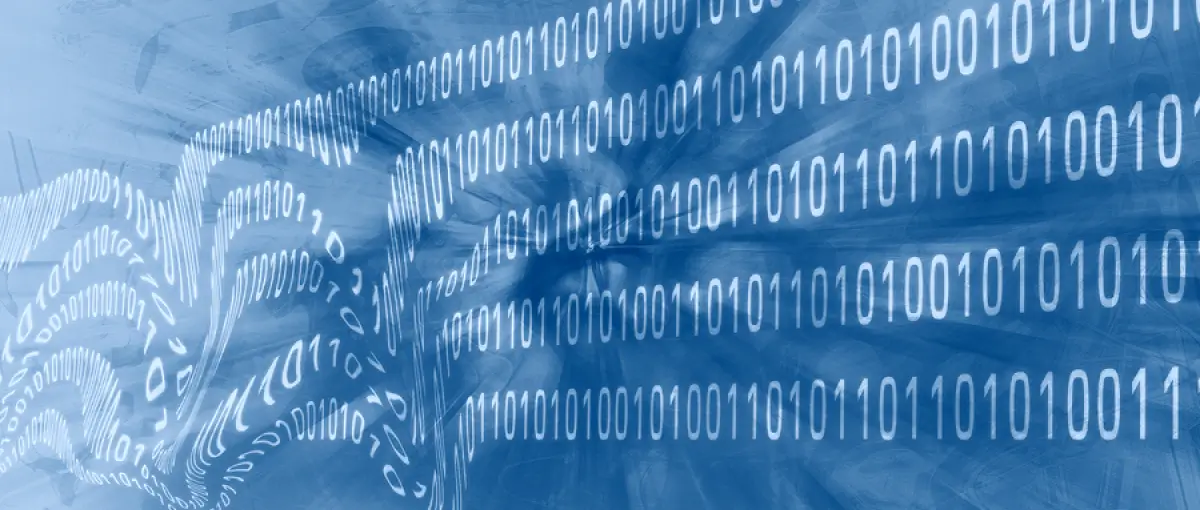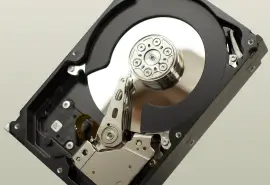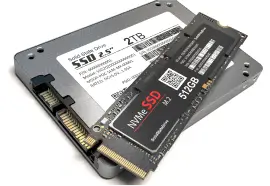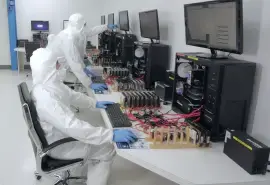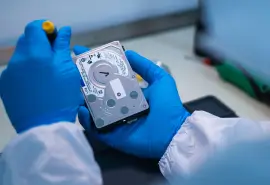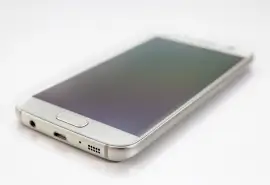The world runs on data and the devices that store it. Yet many people do not understand that microcode controls hard disk drives (HDDs) and solid-state drives (SSDs) in computers and the cloud. This low-level software, known as firmware, acts as a bridge between hardware and the operating system. If firmware becomes unreadable, then the device fails.
Firmware corruption is one of the most complex issues that affects digital storage. It occurs when the embedded software encounters damage or errors that alter its microcode. As a result, the hardware and high-level software cannot pass instructions to the other, leading to data loss. Repairing corrupt firmware often requires specialized tools and techniques to recover data.
The experts at Secure Data Recovery, a leader in professional data recovery services, explain how firmware corruption happens and outlines solutions.
The Importance of Firmware
Firmware is the low-level software embedded within electronic devices. It enables them to function by facilitating communication between hardware and software. Unlike an operating system or drivers, firmware is deeply integrated into a device’s core functionality.
There are several types of firmware and multiple ways it can become corrupt. For example, damaged firmware in a hard drive, SSD, or RAID could prevent data access. A corrupt BIOS or UEFI could prevent a computer from booting. Modified firmware in network equipment like routers, switches, and firewalls can compromise security.
Types of Firmware
Here are some types of firmware and examples of how corruption can lead to data loss:
- BIOS and UEFI. The Basic Input/Output System (BIOS) and Unified Extensible Firmware Interface (UEFI) are types of firmware responsible for launching the operating system. This task includes initializing hardware and verifying system security.
- Storage devices. All storage mediums, including hard drives, SSDs, and USB flash drives, have firmware that controls how the device interacts with a computer. It enables essential processes such as data read/write operations, power management, and error handling.
- Peripheral devices. Graphics cards, video cards, and other devices have dedicated firmware. This firmware ensures compatibility, performance optimization, and stability across different hardware and software environments.
- Industrial machines, smart devices, and IoT devices. Embedded firmware is often more complex than standard device firmware. It controls real-time operations in mission-critical environments such as medical devices, automotive systems, and security appliances.
Common Causes of Firmware Corruption

The following list represents the most common causes of firmware corruption and the impact on devices:
1. Power Outages and Surges
Devices constantly read and write firmware instructions, and an unexpected power outage, battery depletion, or voltage spike can interrupt this process.
Impact: The storage device may fail to initialize, display incorrect capacity, or become entirely undetectable by the operating system.
2. Failed Firmware Updates
Firmware updates are designed to improve device performance, security, and stability, but interruptions during the update process can result in corruption.
Reasons for a failed update include:
- Power loss mid-update.
- Software conflicts or forced shutdowns.
- Corrupt update files from improper downloads.
Impact: A failed update can prevent a computer from booting entirely in cases involving BIOS or UEFI firmware.
3. Malware and Cyberattacks
Cybercriminals have increasingly targeted firmware-level vulnerabilities to compromise devices in ways that traditional antivirus solutions cannot detect.
Some examples of firmware-based attacks:
- LoJax: A rootkit that modifies UEFI firmware, making it persistent even after a system wipe.
- BadUSB: Reprograms USB firmware, allowing attackers to control compromised devices.
Impact: Firmware-based malware can modify boot sequences, install backdoors, or prevent access to data, making standard software fixes ineffective.
4. Physical Damage to Storage Devices
Physical damage to hard drives, SSDs, and embedded controllers can make firmware inaccessible or unreadable, leading to device failure.
Here are the most common causes of physical damage:
- Drops or impact damage that affects the controller chip.
- Water, heat, or fire exposure damaging firmware storage components.
- Wear and tear over time, causing critical areas of the firmware to degrade.
Impact: Even if the drive spins or powers on, firmware damage may prevent the system from recognizing the device, requiring professional intervention.
5. Manufacturing Defects
Firmware corruption could develop gradually due to hidden manufacturing flaws or wear and tear. Even high-quality storage devices are prone to degradation over time, which can lead to firmware instability.
Some common issues that can develop over time:
- Bad sectors forming in the firmware storage area, preventing proper device initialization.
- Electronic components wear out, causing firmware modules to behave unpredictably.
- Hidden defects in SSD controllers, leading to unexpected drive failure.
Impact: In some cases, firmware failures may appear as random crashes, slow performance, or unexplained system errors before leading to total device failure.
How To Prevent Firmware Corruption
Although firmware corruption is complex and unpredictable, proactive measures significantly reduce the risk of failure.
These key steps can protect your devices:
- Use an uninterruptible power supply (UPS). Power surges and sudden outages can corrupt firmware during critical operations. A UPS stabilizes power flow, preventing unexpected failures.
- Perform safe firmware updates. Always ensure that firmware updates are fully completed before shutting down a system. Avoid interruptions and verify that updates come from trusted sources.
- Handle storage devices with care. Physical damage from shocks, water exposure, and extreme temperatures can affect firmware chips and system areas on hard drives and SSDs.
- Strengthen cybersecurity measures. Use reliable antivirus software, enable secure boot settings, and avoid unauthorized firmware modifications.
- Back up critical data regularly. Maintaining routine backups – cloud storage, external drives, or RAID configurations – ensures that data remains secure.
What To Do When Faced With Firmware Corruption
Despite following the best practices, firmware corruption can still occur due to hardware failures, software errors, or unforeseen circumstances. Standard recovery methods are not enough when a device becomes unbootable or unreadable due to firmware corruption.
At Secure Data Recovery, we have specialized tools and techniques for firmware corruption, including:
- Firmware reprogramming to fix corrupted modules
- Custom firmware rebuilds on severely damaged devices
- Advanced forensic tools to extract data from inaccessible storage media
Our engineers have decades of experience with hard drives, SSDs, RAID, and other storage and the expertise to fix firmware corruption.
Call us at 800-705-3701 or request help to speak with a data recovery specialist and start your case.

